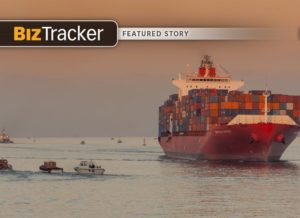
Total year-to-date (April 2 through Nov. 30) cargo on the St. Lawrence Seaway is down 10.4 percent to 31.5 million metric tons, according to a report from the Chamber of Marine Commerce.
“The 2015 shipping season has been a bellwether for North American economic trends,” said Stephen Brooks, president of the Chamber of Marine Commerce. “Ships are delivering cement, stone, gypsum, aluminum and machinery to support an eight-year high in U.S. construction spending, along with growth in the automotive sector in Great Lakes states. But steep declines in global consumption and pricing have largely halted coal and iron ore exports via the waterway this season and that continues.”
Domestic general cargo via the Seaway saw an increase of 27.7 percent this season.
Movements of large-scale machinery and other project cargo like wind turbines nearly doubled this season, up 92 percent.
“The Port of Milwaukee has really proven its value to our regional manufacturers with an increase in largescale movements of machinery for both export and import,” said Paul Vornholt, director of the Port of Milwaukee. “Even within the past two weeks, the port handled a hammer press weighing nearly 100 tons that was delivered to a local company. We have had another strong year for steel moving through the port, which is used by local manufacturers. And a number of vessels arrived through the Seaway bringing in barley to support our city’s brewers. With a few weeks left of the Seaway season, we anticipate a strong finish for our overall cargo numbers as ships bring in more steel.”
Year-to-date Seaway shipments of construction materials such as cement and stone were up 15 percent and 20 percent respectively, according to the report.
The Port of Green Bay reported that it has moved 1.6 million tons of cargo this season.
“Recent imports have included cement, coal, limestone and salt,” said Dean Haen, director for the Brown County Port & Resource Recovery Department. “As for exports, petroleum products have seen an increase due to shortages being experienced on the East Coast. With much of the region, including Wisconsin, experiencing moderate temperatures for this time of year, the port will most likely be able to move cargo through the end of December. This is good news for terminal operators looking to stockpile materials for the winter months and will aid the port in reaching our yearly tonnage goal.”
The St. Lawrence Seaway closes on Dec. 30.
Read more in the BizTracker, a compilation of economic data reports.

